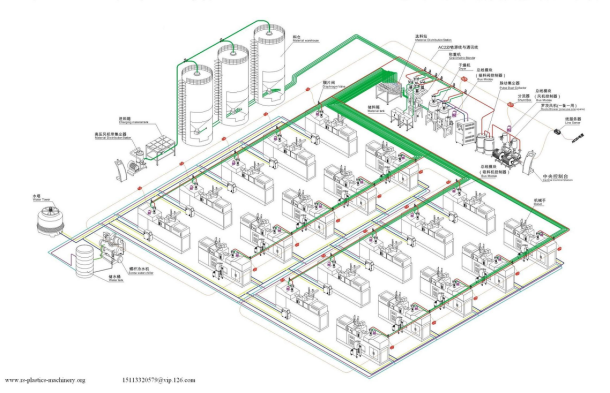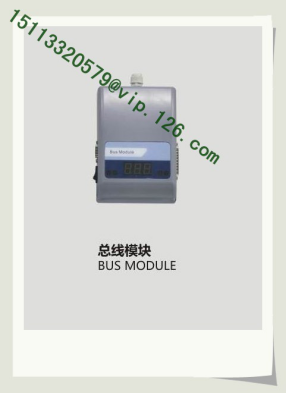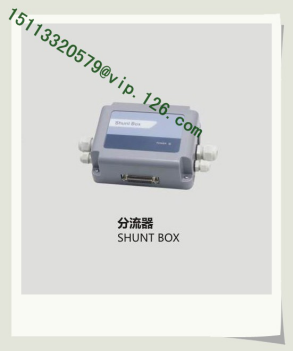[IT168 informationization]
With the rapid development of modern science and technology and the strengthening of global economic integration, logistics is widely accepted as an advanced organization and management concept. China's major and medium-sized cities have successively established or are planning to build logistics industrial parks and logistics bases. For example, Shenzhen will establish the western port area, Yantian Port Area, Sungang-Qingshui River, Airport Port, Pinghu, Longhua, etc. in just a few years. Nanshan, Longgang eight logistics parks. Digitalization, networking, informationization and scale have become a major theme of China's logistics development. We provide third-party logistics with comprehensive and integrated services for our customers. It is fast and convenient for "multimodal transport", convenient and timely "just in Time" relieved the worries of both the production and sales. However, the high-speed development of the logistics industry has put forward higher requirements for the commodity circulation carrier-packaging. This article is from the perspective of modern logistics on the demand for packaging performance.
As we all know, in the process of circulation, goods inevitably have to undergo "transportation", "loading and unloading", "in warehouse management", "packaging", "distribution", "circulation processing" and "information processing". Good or bad is vital in the logistics system, which directly affects the full play of the quality of all aspects of the logistics system. Modern packaging is in line with the requirements of all aspects of the logistics system, and better serve the circulation of goods. Its functions are no longer limited to the four functions of “accommodationâ€, “protectionâ€, “convenience†and “promotion†in the traditional sense. It is also necessary to have functions such as “transportationâ€, “loading and unloadingâ€, “in-library managementâ€, “intelligent identificationâ€, and “information transferâ€. Therefore, in order to adapt to the development of logistics, modern packaging presents the following situation:
1. Containerization and informationization of packaging containers
In terms of transportation, with the emergence of “multimodal transport†and “composite consistent†modes of transport, container and pallet containers are used more and more. In developed countries, international composite transportation is centered on container transportation. 80% of the total transport packaging, which greatly facilitates the packaging of scattered groceries. The use of turnover containers for groceries can be easily stored, stored, and avoided by using corrugated boxes and trays for initial packaging. Moreover, when the large-sized container and the pallet are transported on the way, the goods in the box need not be flipped and replaced, and are transported as a whole in the logistics process, that is, the cargo damage can be restricted and prevented, and the transport efficiency can be improved.
In terms of loading and unloading and handling, about two-thirds of the time for short-distance transportation and distribution is spent on loading and unloading and transporting loose goods. Therefore, it is particularly important to improve the handling and handling efficiency of scattered goods and reduce logistics costs. With the improvement of the overall level of logistics facilities, most of the transport packaging uses forklifts, cranes and other mechanical loading and unloading and handling, avoiding the damage caused by manual barbaric loading and unloading; forklifts, cranes mechanized loading and unloading, handling for the large-scale and collection of transport packaging containers The realization of the realization of the conditions, and the generalization of forklifts and cranes during loading and unloading and handling also promoted the standardization of large containers and pallets. Therefore, the use of large-scale container and pallet packaging products is conducive to the realization of civilized loading and unloading services, loading and unloading mechanization, standardization of operations and scientific management; at the same time, the use of large-scale or integrated container and pallet transportation is also convenient for loading and unloading and handling of mechanical forklifts. It is beneficial to shorten loading and unloading, handling time, and thus reduce logistics costs.
In the area of ​​warehouse management, containers and pallets can be used to stack and manage containers or pallets as a whole. With the increasing variety of containers, such as the emergence of functional containers such as insulated containers and ventilated containers, it is possible to manage a large container as a warehouse. It does not require a warehouse of traditional significance in the logistics process. It also saves a series of storage operations such as warehousing, acceptance, inventory, stacking, storage, and delivery, which reduces the requirements of the product on the warehouse and makes the management of the product easier to implement. In addition, the use of containers and trays When storing goods as storage units in the warehouse, the storage stacking height can be increased, the storage density can be increased, the storage capacity utilization can be improved, and the stacking code of the high-level goods warehouse can be automated, thereby reducing the logistics cost. The container is used as a storage unit for inventory, stacking, When transferring the warehouse and other processes, mechanical sub-construction can be used to improve the mechanization level of the goods.
In terms of information processing, digitalization, networking and informationization have become a major theme of logistics development. The combination of logistics and e-commerce has further promoted the process of packaging informationization. Such as logistics information collection database and coding, electronic and computerized logistics information processing, standardization and real-time logistics information transmission, digitalization of logistics information storage, electronic ordering system (EOS), electronic data interchange (EDI), etc. The widespread application of technology in the factory requires product packaging to be informatized, and the automatic identification system and barcode technology are appropriately applied to the packaging. Logistics automation, such as bar code / language / RF automatic identification system, automatic partition system, automatic access system, automatic cargo tracking system need to have a clear identification on the package and the information code that can be read. At present, the one-dimensional code can no longer meet the requirements of product information description. The two-dimensional code technology rich in product name, price, manufacturer, production date, weight, expiration date, inspector and other information is gradually being used for product packaging. Of course, most of the currently identifiable barcodes are printed by the printer and then attached to the packaging container, which will bring some inconvenience to the informationization of the packaging, but with the technology of printing the machine identifiable barcode directly on the packaging container. The perfection will bring great convenience to the informationization of packaging products.
Second, packaging companies are transformed from “traditional single-package products†to “scaled third-party packagingâ€
With the development of flexible logistics, the number of “multi-variety, small-batch, short-cycle†products is increasing, which requires the packaging industry to have a strong ability to reflect the market. In order to reduce venture capital and reduce inventory, the packaging industry is forced to become flexible, that is, to provide different packaging services for different products quickly. With the liberalization of trade and the expansion of the global capital market, logistics companies have joined forces to establish logistics bases and logistics industrial parks. In order to adapt to the important trend of high-speed logistics development, traditional single packaging products, whether paper packaging or plastic packaging, may be It is difficult to meet the needs of the packaging solutions of major customers of logistics enterprises. For a simple toothpaste package, it needs both plastic hose packaging and carton packaging, and its outer packaging involves corrugated boxes. Packaging problems, which force companies that produce different packaging products to move toward a joint development, so that packaging products in terms of quantity, quality and variety have made breakthroughs to enhance the competitiveness of enterprises.
In addition, with the entry of the WTO, the export of China's products is increasing, and the demand for packaging is becoming more and more strict. The large customers of logistics enterprises are increasingly aware that the ability of purchasing, packaging, R&D and packaging planning of internal packaging is seriously insufficient. Many companies hope to use the "outsourcing" and "contract-style" packaging methods to complete the packaging of products, which requires a large-scale packaging enterprise to provide one-stop packaging solutions, namely, product packaging planning, Packaging production, packaging procurement, and product packaging are all outsourced to third parties other than product producers and consumers, namely the “scaled third-party packaging†mentioned in this article. The larger the scale of packaging enterprises, the stronger the ability to adopt new technologies and technological innovations, and the more they can meet the demand for packaging in logistics parks and logistics bases. Therefore, with the development of logistics, “scaled third-party packaging†will become more and more the market.
In short, the rapid development of logistics will definitely bring about major changes in the development of packaging. Only packaging that meets the needs of today's logistics will become the leader in the trend, and become a well-deserved modern packaging.
The Plastic Injection Centralized Feeding System is an overall solution for customer's whole plant, realizing central conveying and central controlling, and continuous unmanned forming production. It is designed according to machine local conditions in customer`s plant with consumption of raw materials, and the special requirement for auxiliary equipment.
The following are commonly used plastic auxiliary machine for the centralized feeding system, for example, the pulsation dust collector, roots blower, sensor hopper, vacuum hopper, line server, shunt box, bus module, central control unit, raw material distribution station, Proportional Valves , hopper dryer, volumetric doser, robot arm, vertical stirrer, hopper loader, material storage tank, Honeycomb Dehumidifier, material warehouse, online granulator, screw water chiller, Water Cooling Tower, gravimetric blender etc. Our Group provides one-stop solution for plastic injection industry. If you need any of the above mention plastic auxiliary machinery, please feel free to contact us.




Plastic Centralized Feeding System
Plastic Centralized Feeding System,Plastic Recycling Lines,Plastic Crushing Sifiting Lines,Plastic Powder Sifiting Lines
RS Plastics Machinery Co., Limited , http://www.rs-plastics-machinery.com